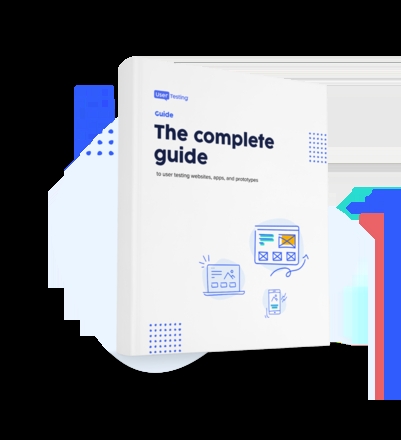
16 tools and resources for improving online accessibility

So, you’ve decided that you want to improve the accessibility of your website. Or maybe you’re not quite sure what accessibility is, but you’ve heard the term mentioned, and you’re here to find a guide that will help you get to grips with the concept.
Maybe you’re looking for a good free tool that will allow you to check a specific accessibility aspect of your website, or maybe you’re unsure whether to carry out accessibility testing or an accessibility audit on your site?
Whichever of those is true, if improving accessibility is on your website checklist, you’ve come to the right place.
This is a round-up of tools, resources and guides to help you understand accessibility issues and improve the accessibility of your digital product. It’s designed to be a comprehensive reference point that you can revisit whenever you need a refresher, or to grab a link or article that will help you make the case for accessibility to a colleague.
Getting started: why is accessibility important?
Web accessibility is paramount in creating an inclusive digital environment where everyone, regardless of their abilities, can participate fully. By ensuring that websites are accessible, we cater to the needs of individuals with temporary or permanent impairments.
Web accessibility has significant benefits for organizations. Compliance with accessibility standards helps avoid legal repercussions and fines, as many countries have guidelines regarding digital accessibility. Furthermore, incorporating accessibility features can enhance SEO, improving a site's visibility and reach.
Most importantly, accessible websites often deliver a better user experience, as they are typically more navigable and user-friendly,
Accessibility guidelines
In any work you do or research you carry out into accessibility, you’re likely to come across references to guidelines or web standards for accessibility which you should be bearing in mind or adhering to.
What are these, and how can you make sure you’re compliant?
- WCAG 2.0: The Web Content Accessibility Guidelines, published by W3C, are the most notable and comprehensive set of web accessibility guidelines. Some countries, including Canada, Australia and the EU, have a legal requirement for websites to meet WCAG guidelines. The WCAG 2.0 checklist can help in making sure that your website meets all of the requirements, and is a useful reference point.
- BS 8878: The British Standard 8878 is an accessibility code of practice designed to help web developers, project managers and production teams develop accessible products. It’s not free, but Access 8878 is a great free, plain-English guide to the standard.
Building an accessible website
If you’re building or redesigning a website that you want to make accessible, here are some resources that will give you points to bear in mind when designing for specific accessibility needs.
- How to design websites for blind and partially sighted people: With an estimated 2 million people in the UK living with significant sight loss, what can you do to make your website accessible? We look at writing content for screen readers, designing for color blindness, and the role of SEO in accessibility.
- How to make websites age-friendly: Designing for over-50s web users, also known as “digi-boomers,” requires some special considerations. Our overview of age-friendly accessibility gives four key points to bear in mind.
- How to make better websites for people with dyslexia: In honor of Dyslexic Awareness Week, we explain ways you can make your website’s design and content more accessible to dyslexic users.
Accessibility ‘spot check’ tools
There’s a wide range of automated tools available online that will help you quickly check specific elements of your website for accessibility. Handy though these tools may be, they can often be very literal in interpreting issues, without taking into account the full context of the site.
In general you should only use them for a quick, surface-level check, not as a substitute for proper accessibility testing or an audit – more on that in the next section.
- WAVE web accessibility evaluation tool: This tool will detect potential accessibility issues across your site as a whole, as well as highlighting the areas where it does well.
- WebAIM quick reference: testing web content for accessibility: A quick reference list of checklists, tools and simple tests you can carry out yourself.
- Color contrast check: Check the contrast between any two colors for its accessibility to visually impaired and color blind users.
- Accessibility viewer: An inspection tool that displays the accessibility API information that your browser conveys to assistive technology such as screen readers.
- SortSite Desktop: A downloadable website testing tool that will check your site for issues such as compliance with W3C standards, accessibility and usability red flags.
Accessibility audit or accessibility testing? How to choose the right option
As I mentioned in the previous section, if you want to give your website a thorough, real-world check for accessibility compliance, you need to go further than just testing with automated tools.
The two options available to you are an accessibility audit with an expert consultant, or accessibility testing with disabled users. If you’re stuck on which one is right for you, below are some handy guides to consult.
- Accessibility audit vs. accessibility testing: This guide by Webcredible examines the pros and cons of both accessibility audits and accessibility testing. While it comes down quite firmly on the side of auditing, it’s up-front about the advantages and disadvantages of both, and so is worth a read.
- W3C wiki: Accessibility testing: The ‘Accessibility testing’ page of W3C’s wiki is a very comprehensive guide to when and how to carry out accessibility testing on your website. Not to be read in one sitting, but definitely one to bookmark and refer back to.
- 5 things you should know before buying accessibility audit and accreditation services: Accessibility consultancy Hassell Inclusion takes a critical look at the various accessibility accreditation badges websites can earn, what they mean, and how valuable they are to users.

Get started with experience research
Everything you need to know to effectively plan, conduct, and analyze remote experience research.





